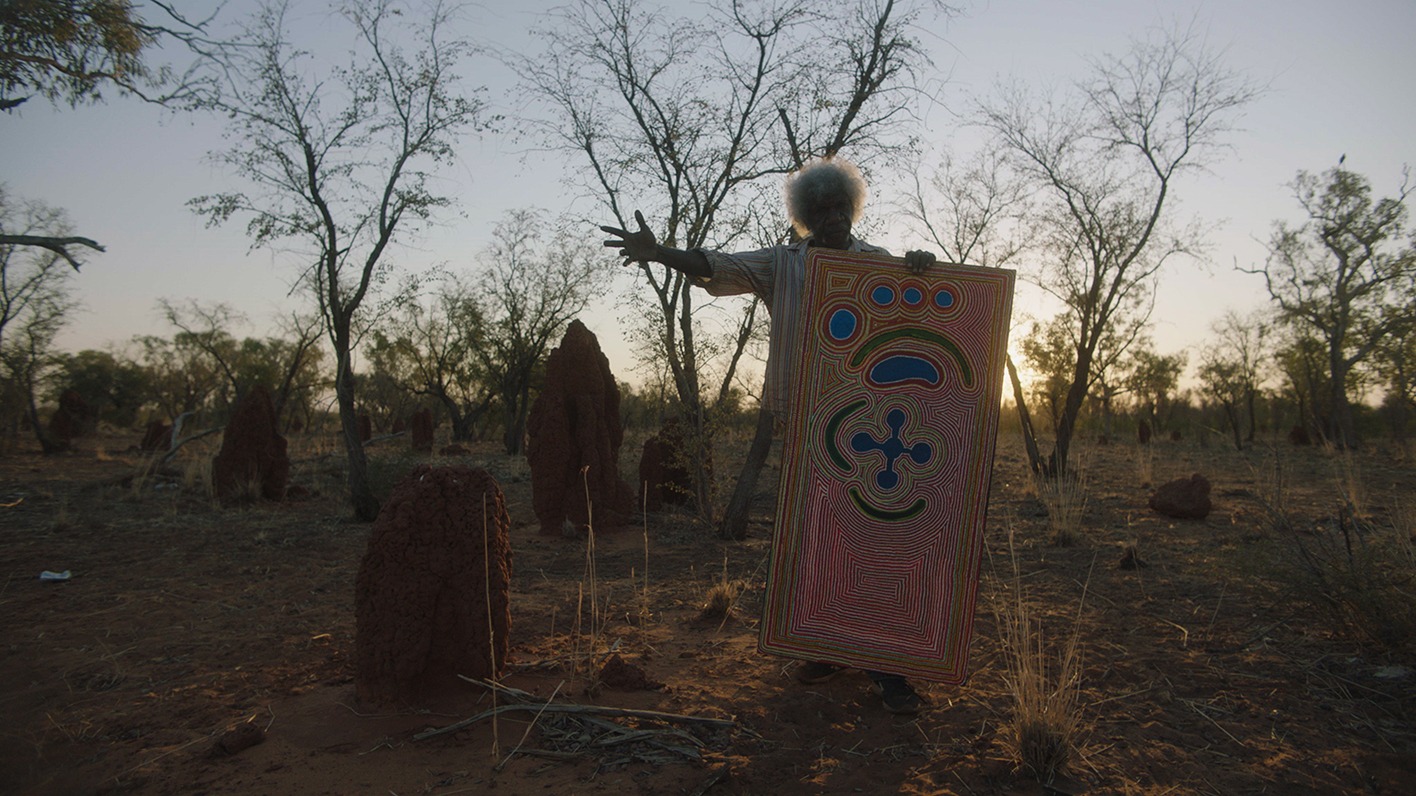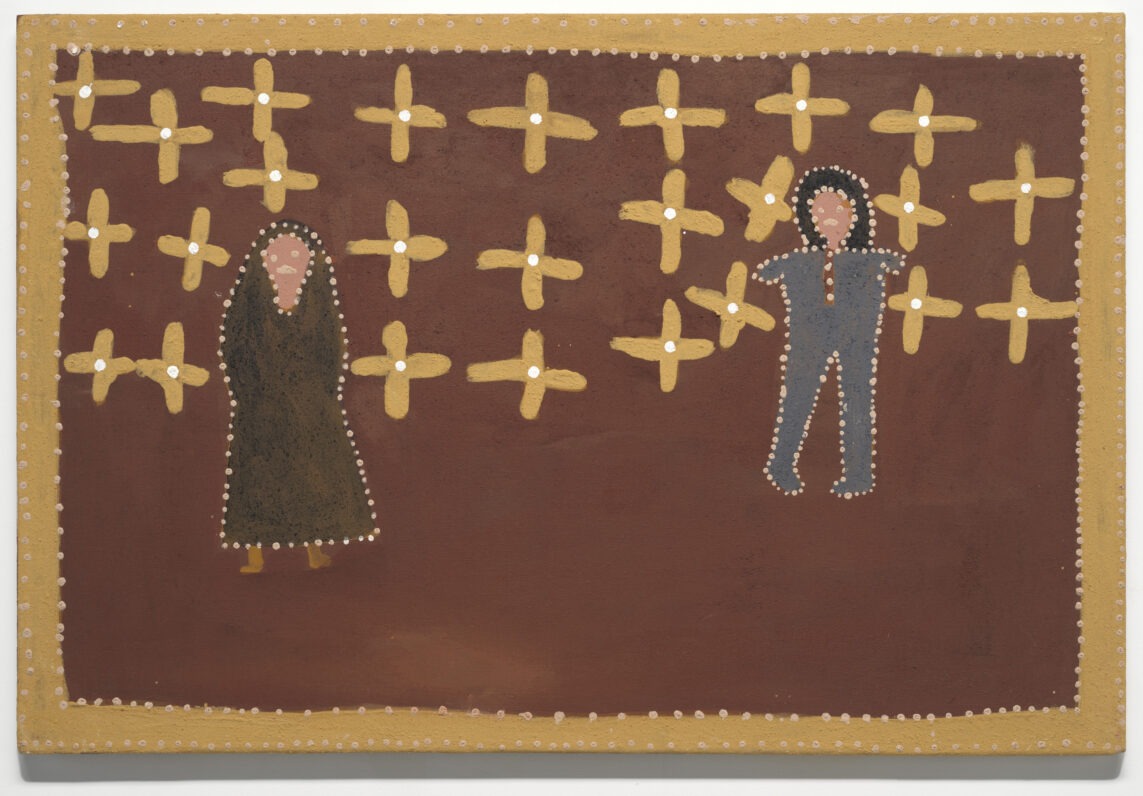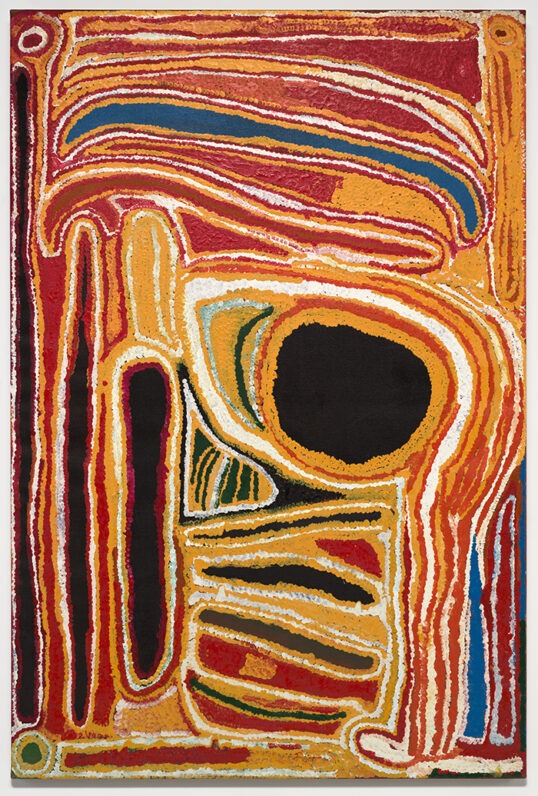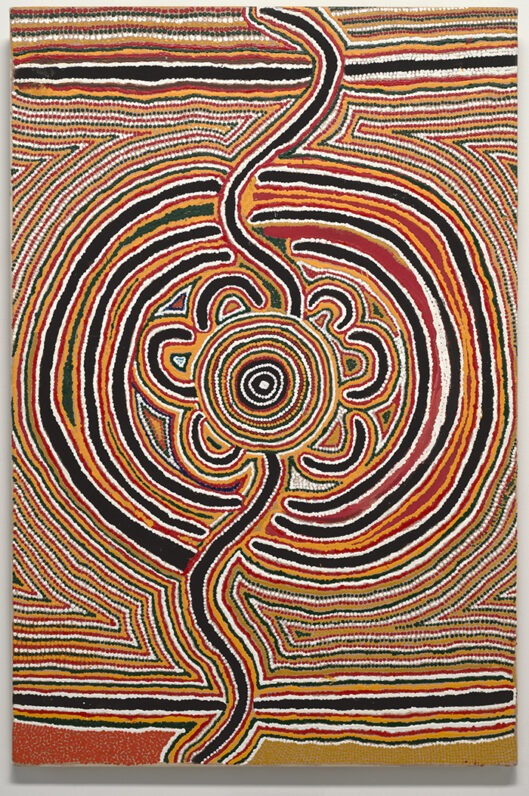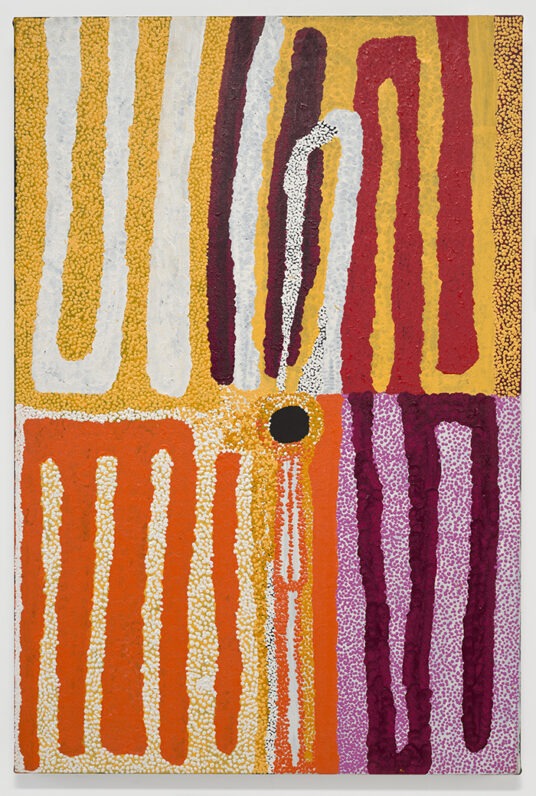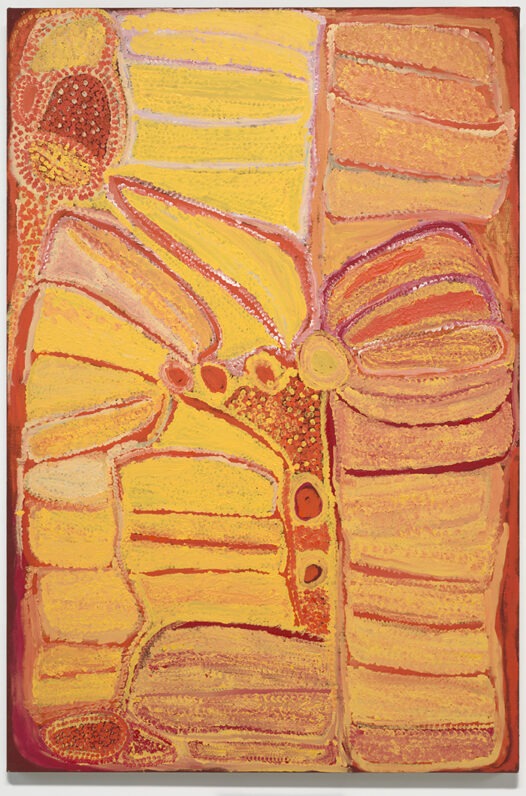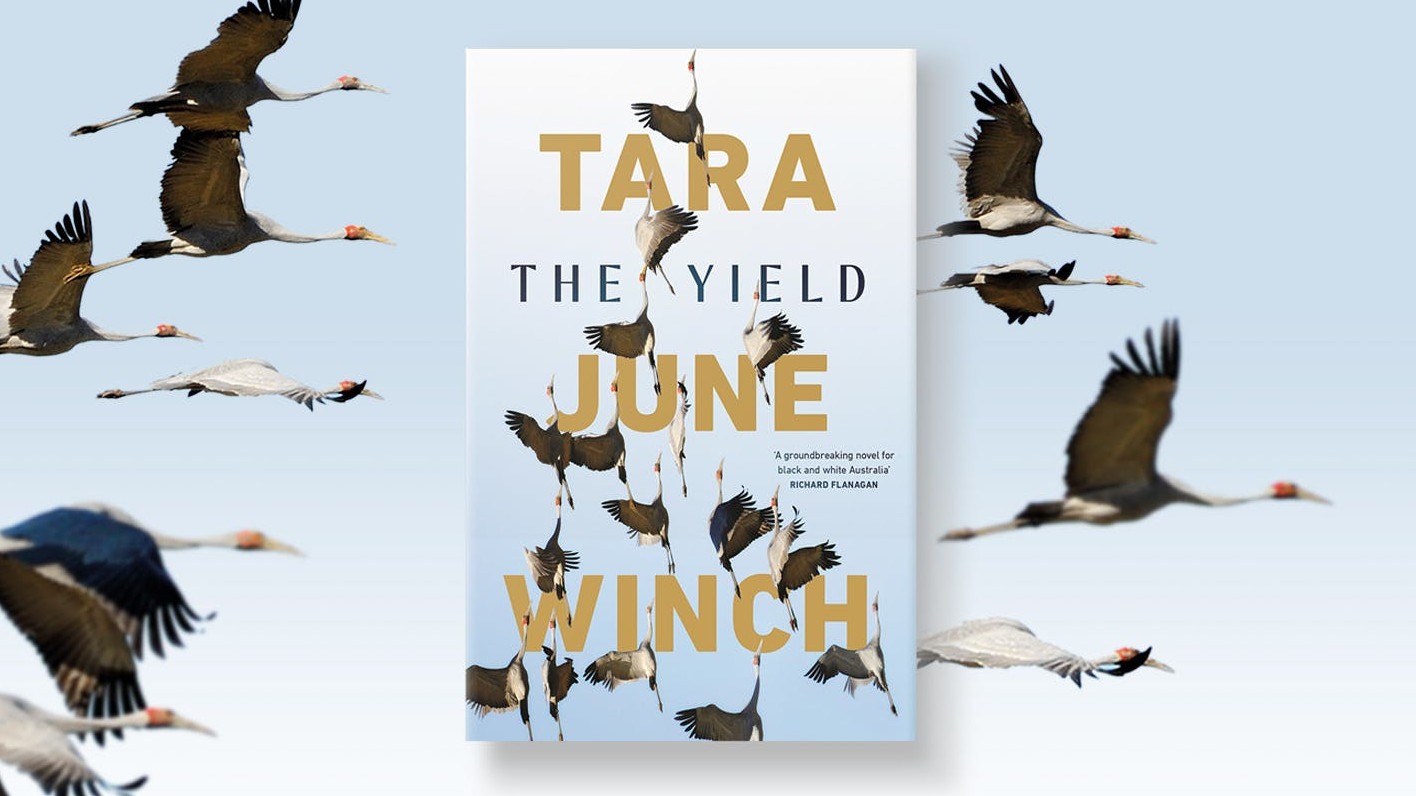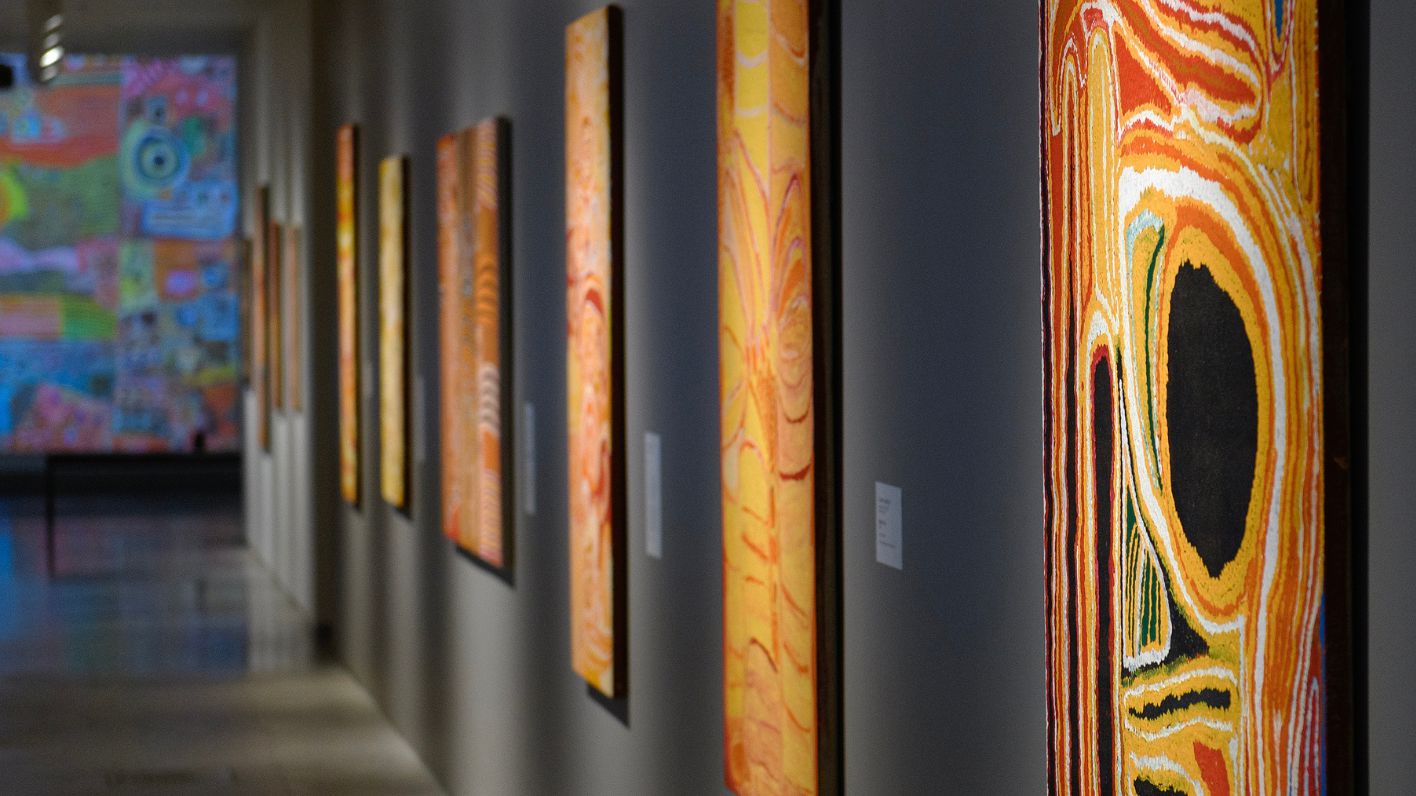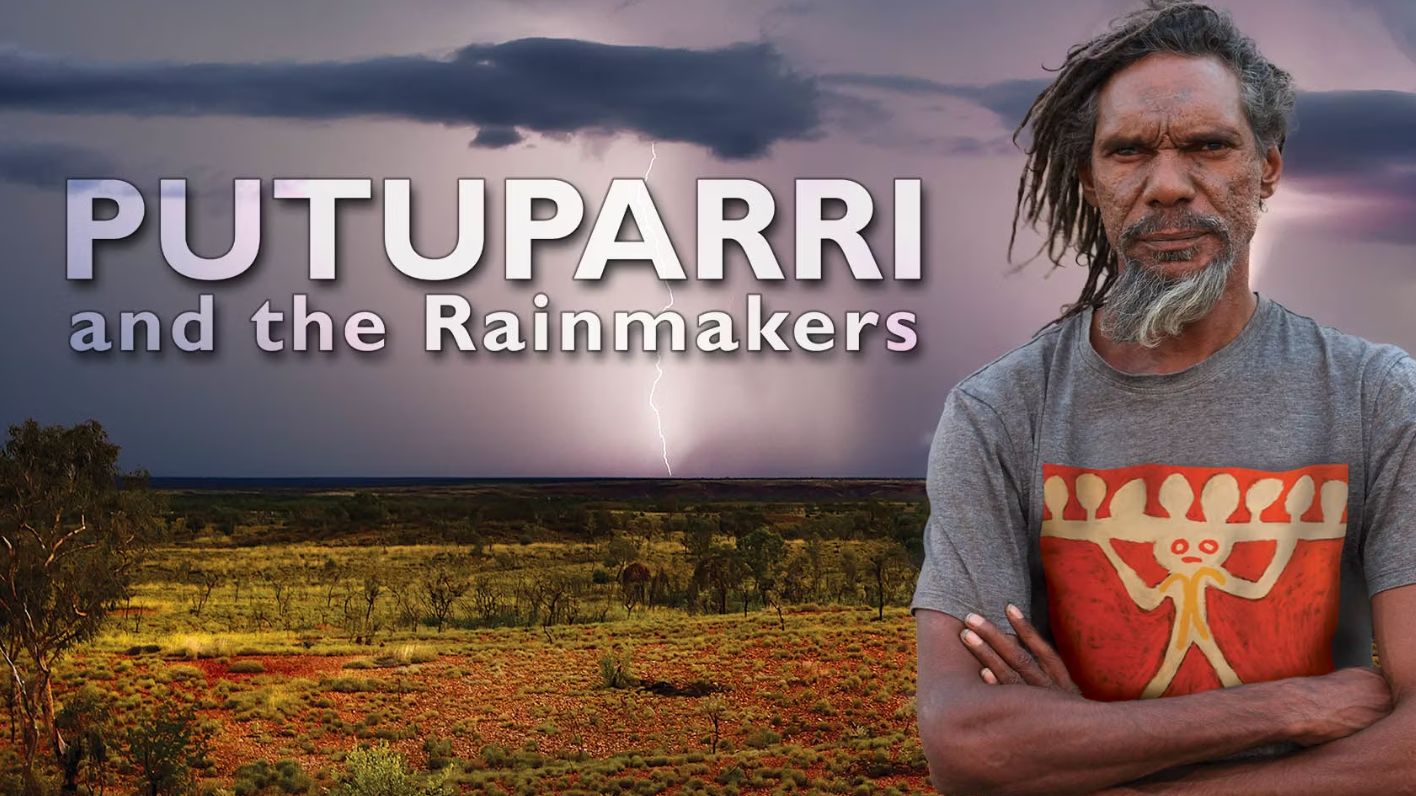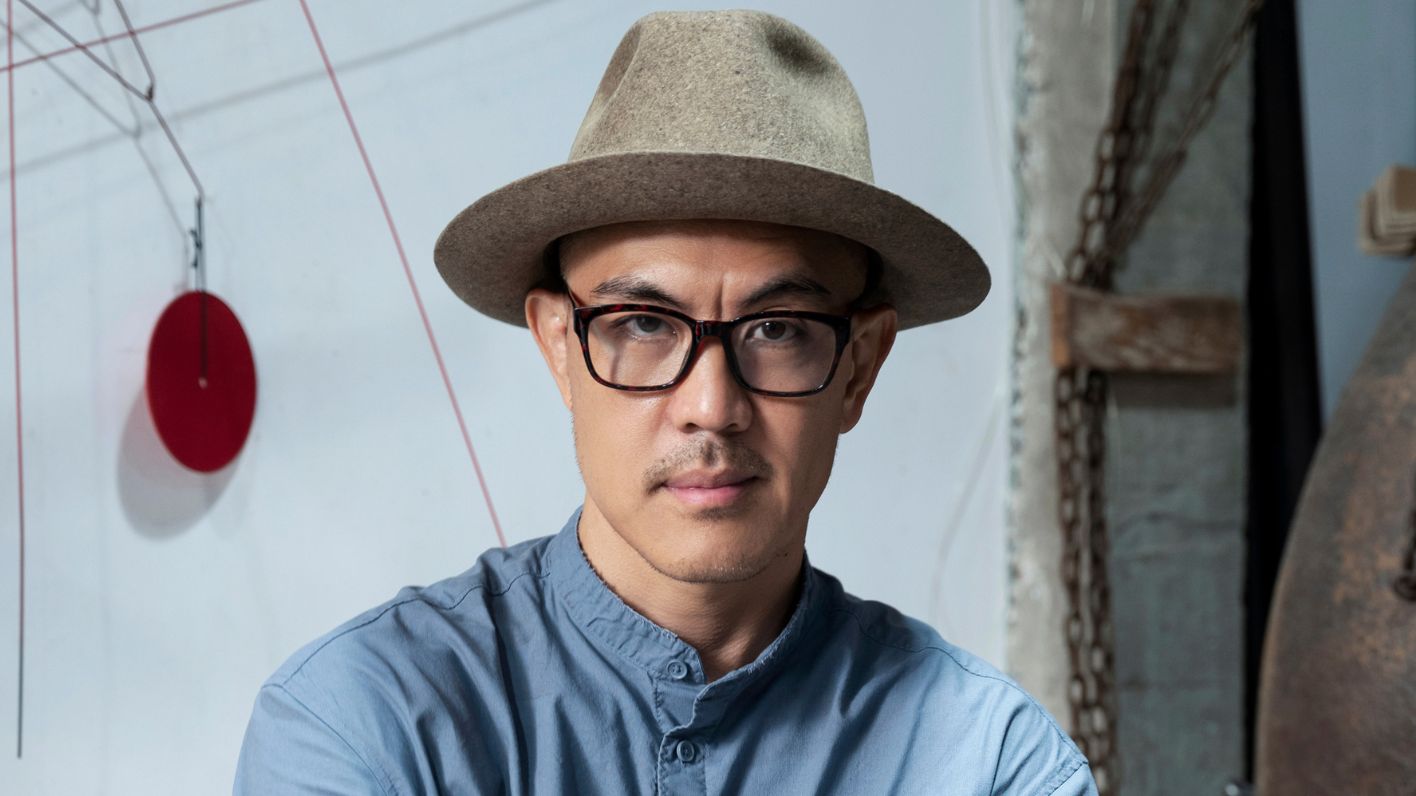This exhibition takes its inspiration from the video, We Were Lost in Our Country (2019) by Tuan Andrew Nguyen, now in the Nevada Museum of Art’s permanent collection. Nguyen’s powerful, moving-image work tells the remarkable story of the Ngurrara Canvas II (1997), which was made by a group of forty men and four women from the Walmajarri, Wangkatjunga, Mangala and Juwaliny communities and language groups. They all convened at the Pirnini outstation in the Great Sandy Desert in the Kimberley region of Australia to discuss making a Native Title Claim to the Australian government. In order to do this, the community members and Elders made a consequential decision: they would create a painting together that proved that they were the actual owners and original inhabitants of the land. To the Ngurrara people the monumental painting is a map, made from memory, of a place where their ancestors lived for over 65,000 years. It represents the direct connection to their land and the knowledge passed down for countless generations about what they refer to as Country. Fortunately, their claim was successful and thus, their achievement and legacy provides a remarkable model for the understanding of land rights, culture, and identity. In the words of Nguyen, “We Were Lost in Our Country explores questions of personal agency, inherited trauma, and intergenerational transmission, through a conversation among ancestors and descendants.” Importantly, Nguyen conveys the story through his interviews with Aboriginal and Torres Strait Islander people, so that they chronicle their own history and relationship with the land.
In the exhibition, the video is paired with a selection of paintings by artists from the Great Sandy Desert (also known as the Western Desert), some of whom were involved in painting the Ngurarra Canvas II, such as Jimmy Pike, Ngirlpirr Spider Snell, Mawukura Jimmy Nerrimah, and Tommy May Ngarralja. Most of the works are recent gifts from Margaret Levi and Robert Kaplan, and Dennis and Debra Scholl, and now are part of the Museum’s Robert S. And Dorothy J. Keyser Art of the Greater West Collection. In 2012, the Museum defined the Greater West as a “super region,” which broadens conventional definitions of the West by expanding the scope of the collection’s geographic emphasis to encompass a region generally bounded from Alaska to Patagonia and from Australia to the United States intermountain West. This is a geography of frontiers characterized by large expanses of open land, enormous natural resources, diverse Indigenous peoples, colonization, and the conflicts that inevitably arise when all four of those factors exist in the same place at the same time.
Sponsor
Roswitha Kima Smale, PhD
Additional Support
Martha Hesse Dolan and Robert E. Dolan
Linda Frye
